Cloud infrastructure management is extremely crucial in the operations of the current businesses. Since more and more companies shift their operations to the cloud, it is important to manage such resources as storage, computing power, and network bandwidth.
Artificial Intelligence – To satisfy the increasing market need of maximizing performance, cost management, and efficiency, numerous enterprises are finding Artificial Intelligence (AI) a potential tool to answer their growing cloud infrastructure management.
Cloud infrastructure management with the intervention of AI is a game changer. It can help companies automate repetitive duties, allocate funds, and anticipate future problems before they can affect the running of the enterprise.
What is Cloud Infrastructure Management?
Cloud infrastructure management is the process of managing and maintaining the core requirements of cloud computing systems (servers, storage, networking and security). Contrary to enterprise on-premise infrastructure, which companies take care of by themselves, cloud infrastructure is controlled and kept by cloud services providers like Amazon Web Services (AWS), Google Cloud Platform (GCP) and Microsoft Azure.
Cloud infrastructure management is mainly carried out by the following major duties:
-
Resource provisioning: Demand-based allocation of cloud resources.
-
Monitoring and performance optimization: Providing the cloud systems with the smooth running of more effective performance.
-
Security and compliance: Prevention of unauthorized data access and ensuring compliance with the industry standards.
-
Cost management: Prevention of unauthorized data access and ensuring compliance with the industry standards.
Due to the increasing complexity of their cloud systems, businesses should have sophisticated solutions to maintain the performance, cost-effectiveness, and scale of their cloud infrastructures. That is the area where AI can bring tremendous advantages in managing cloud infrastructure.
How AI Optimizes Cloud Infrastructure Management
AI is changing the management of cloud infrastructure. Routine tasks can be automated by AI-based solutions; the management of resources can be improved, real-time insights can be provided, and the higher level of security can be achieved. The following are important ways through which the cloud infrastructure is being optimized using AI:
1. Automation of Routine Tasks
Automation of repetitive time-consuming tasks is one of the greatest advantages of AI in cloud infrastructure management. Such work consists of resource provisioning, monitoring and even routine maintenance. These activities used to take place through the manual effort of the IT teams, making them expensive and very prone to human error. With the advent of AI-driven systems, those actions can, instead, be done independently by the system to increase efficiency and also liberate IT personnel to address more complicated issues.
In practice, AI would enable automated provisioning of resources in cloud computing up or down, depending on demand. When unexpectedly high traffic has resulted in a cloud service, AI may provide extra computing power and bandwidth capacity to serve the extra demand, and adjust it right after traffic levels off.
Example: Amazon web services (AWS) apply one service that is Auto Scaling which is a machine learning-based service, used to automatically scale the active instances on the cloud depending on had traffic in real time. This will make businesses utilise what they require, meaning that there is less of the cost of operation.
2. Predictive Analytics for Proactive Management
With the ability to take real-time data and process large volumes of data, AI can offer predictive analytics, solving potential problems before they arise. With cloud infrastructure management, this implies that AI could be used to forecast the required resources and identify performance bottlenecks and even failures, so that businesses can act accordingly before such problems affect their performance.
Example: Cloud-based predictive maintenance solutions use AI to predict the hardware or virtual instances that are most likely to fail to help businesses schedule a first-time maintenance to prevent downtimes based on their past performance records.
Besides ensuring the system stays at a high performance, AI-driven predictive analytics have the ability to optimize the resources available since they would analyze the past patterns and what the future demand would be. This results in scaling in a more efficient manner; they maximise on the use of resources and mitigate the risk of over-provisioning or under-provisioning.
3. Enhanced Security and Compliance
One of the greatest areas of concern to the business is cloud security. Under AI, the threat, vulnerabilities, and compliance risks on cloud infrastructure can be monitored consistently. Artificial intelligence can check as well as study the traffic in the network and identify anomalies, flagging any suspicious activity. This greatly increases the security in the cloud systems because it not only gives real-time warnings but also responds to potential threats automatically.
Example: Google Cloud uses AI-enabled solutions such as Cloud Security Command Center to manage cloud resources and detect possible security threats. With the help of AI algorithms, network activity and users behavior are analyzed to detect anomalous activity and reduce the risks before they can grow.
With GDPR, HIPAA, and CCPA as particular regulations, AI assists businesses in compliance with these rules regarding data protection. The presence of AI-powered tools leads to the scanning of cloud systems to identify compliance flaws and results in the instant application of repairs or warnings so that companies can rest assured of being compliant with industry practices and laws.
4. Cost Optimization
Cloud cost optimisation is an issue for most companies, particularly those that depend on scaling their resources to meet the changing demand. Businesses can adjust their cloud expenditures with the assistance of AI, which identifies the real-time costs or can give recommendations on what can be saved. Due to AI, the resource allocation can be automatically adjusted to the level at which businesses only use what is necessary, reducing costs.
Example: AWS Cost Explorer is an AI-enabled platform that allows businesses to monitor their cloud expenditure patterns, forecast their future costs, and suggest optimal measures to minimise expenses by choosing the most effective use of available resources and cancelling redundant services.
Cloud optimization engine Also known as Cloud cost management, AI-based cloud optimization solutions employ algorithms to highlight inefficiencies and make cost-saving recommendations, including storage consolidation or instance changes to lower-cost instances.
AI Technologies for Cloud Infrastructure Management
AI technologies that are used to achieve the most effective management of the cloud infrastructure are numerous. The following are some major technologies that propelled the AI in this sector:
| AI Technology | Description |
|---|---|
| Machine Learning (ML) | ML allows cloud systems to study past performance and predict the future so that they can make better decisions. |
| Natural Language Processing (NLP) | NLP also enables cloud systems to communicate with users using natural language thus simplifying management of clouds by using voice or text interfaces. |
| Predictive Analytics | Predictive analytics relies on past data to predict future outcomes, and assist companies to predict and circumvent problems in advance. |
| Robotic Process Automation (RPA) | RPA will allow automating operations like resource provisioning, make fewer requests to a human operator. |
| Anomaly Detection | AI algorithms help detect anomalies and anomalous trends in cloud performance information, which allows more rapidly identifying and addressing problems. |
Benefits of Using AI for Cloud Infrastructure Management
The AI can bring many advantages to cloud infrastructure management. There are some major benefits as follows:
1. Cost Efficiency
AI assists businesses in optimizing their clouds by weeding out wastage so that they pay only what is required. AI systems will be able to eliminate the problem of over-provisioning by using predictive analytics and real-time monitoring to avoid unnecessary expenses. It is also an AI that can be used to select unused resources so that businesses can scale down or cancel unnecessary cases.
2. Scalability and Flexibility
With AI, a cloud infrastructure will be able to dynamically scale according to the needs of a business, making sure that whatever resources a business needs are available whenever needed. Regardless of the peak hour or the off-peak hours, artificial intelligence positions the results that the cloud services stay in business without overwhelming the systems and clogging the resources.
3. Proactive Issue Resolution
AI allows companies to estimate the possibility of failures as well as performance problems and, therefore, prevent service downtime to deliver a non-stop service. Be it an issue of predicting network overload, or identifying a possible hardware breakdown, the AI systems can enable companies to fix the problem before it hurts the customer.
4. Enhanced Security
AI continuously tracks cloud infrastructure variables to discover anomalies, threats, and vulnerabilities and deliver real-time alerts and automatized response to any potential security incidents. This promotes the security of clouds allowing companies to store their data and be in compliance with the regulations.
Real-World Applications of AI in Cloud Infrastructure Management
The role of AI towards managing cloud infrastructure is not merely hypothetical. Most companies today are enjoying the fruits of AI by applying it to their cloud operations. So, what are the real life uses of AI in improving cloud infrastructure management? Let us look at some of them:
1. Predictive Scaling and Auto-Scaling
Predictive scaling and auto-scaling is one of the major aspects through which AI is streamlining cloud infrastructure. AWS and GCP are cloud platforms that have AI tools to predict peak traffic depending on historical data and projected demand. This enables them to automatically rectify the resources that are at their disposal hence the infrastructure can scale down or up with ease.
Example: AWS Auto Scaling leverage machine learning to forecast resource limits (compute instances, storage) expansion and contraction to avoid over-provisioning and make sure that only the necessary resources are allocated.
Predictive analytics and AI can minimise the potential of service outage scenarios or slowness when hits are high, at the same time as eliminating the squandering costs of maintaining over-provisioning.
2. AI in Cloud Cost Optimization
Tools powered by AI are vital to businesses that want to optimize their expenses on the cloud. There is a tendency to find cloud services becoming costly where companies lack better management on how to utilise capacities thus wasting capacities. AI finds unused resources, suggests more appropriate pricing plans and automates cost distribution, which makes businesses spend only on what they require.
Example: The Cost Management Tools available in Google Cloud to help enterprises optimize their usage identify idle resources with the help of AI, and advise them how to make the best use of them. AI assisted tool helps flag the inefficiencies and offer recommendations on how to rebalance the current resource allocation in order to cut costs.
Besides, AI-based solutions enable companies looking to multicloud their resources to optimize the prices of resources among various providers. This has made it possible to make the most out of the cheapest cloud services publicly available to the business world.
3. Proactive Security Management
Artificial intelligence is improving security in cloud infrastructure by keeping systems under constant watch and preventing vulnerabilities before they can be struck upon. The usual security processes are reactive in nature and hardly can be proactive- AI can enable detecting the threats and anomalies proactively and providing automatic security solutions.
Examples: IBM Cloud Security uses Artificial Intelligence to constantly scan cloud environment to detect security risks and loopholes. The AI system will be able to observe unusual patterns of activity that might show a possible security breach, i.e. Distributed Denial of Service (DDoS) attacks. AI will be able to automatically go into defense mode in case a threat is noticed before any damage is done and thus less human intervention is required.
The AI prospect also helps companies to keep up with regulations like the GDPR or HIPAA. AI can serve as a way of businesses to escape penalties and keep data privacy since it automatically scans and detects gaps of compliance.
4. Network Traffic Optimization
When it comes to the management of networks within a cloud environment, this is a significant factor to effective management since the performance might be altered and the networks may be subjected to congestion. AI implementations apply predictive analytics and machine learning to examine the network traffic patterns, anticipate the demand and dynamically adjust the bandwidth and latency.
Example: In the case of Cisco, its network management system features AI that is used to manage traffic patterns, predict congestion, and route data to avoid bottlenecks using machine learning. AI assists enterprises to make sure that their network infrastructure achieves great performance even when the volumes of utilization are high.
Challenges in Adopting AI for Cloud Infrastructure Management
The advantages of AI are obvious, whereas using AI in cloud infrastructure management has its challenges as well. These are the challenges that businesses should address in order to better embrace the potential of AI.
1. Data Privacy and Security Concerns
AI systems need huge sets of data to operate. This may bring a sense of fear concerning information security and data privacy, and in cases where sensitive information or personal data are being handled by the AI tools. The companies must make sure that their AI models are aligned with data protection laws and regulations, including GDPR, CCPA, and HIPAA.
Solution: Companies should adopt strong data protection options such as encryption andan access control mechanism to guard confidential data. Moreover, to develop customer confidence, the use of data by AI systems is one of the areas that requires transparency.
2. Integration with Existing Systems
The infrastructure of many businesses is legacy that can potentially not mix well with the contemporary AI tools. Adding AI to the cloud infrastructure management systems that business already use might be a complex, time-consuming process where companies have to restructure or upgrade their systems in terms of making them compatible with AI-driven solutions.
Solution: Companies must seek AI tools that can be integrated with their infrastructure easily. Some cloud vendors such as AWS and Microsoft Azure provide ready-made AI that can perfectly integrate with legacy systems. To consultancies and other companies that have very specific needs, investments in hybrid AI solutions will help to facilitate the integration.
3. Skills and Expertise
Management of cloud infrastructure with the use of AI is a more complex topic since it involves expertise in the field of both AI and cloud computing. A lack of talent possessing expert knowledge in handling AI tools and models also poses a major problem to most businesses. The rigor of the work and the maintenance time to train AI models and be able to take care of them in future will be a team of specialists.
Solution: Companies can tackle this skill shortage either by engaging in training and developing their employees themselves or they can contract the services of third-party vendors specializing in cloud management based on AI. Also, it is possible to use AI-as-a-service platforms provided by vendors at the cloud level to make businesses work with AI without the special knowledge.
4. Cost of Implementation
Although AI has a potential to eventually result in cost savings, the cost to implement AI-based solutions can be high. Companies should evaluate the cost-effectiveness of using AI by calculating the return on investment (ROI) based on the cost of purchasing hardware, training the employees, and introducing AI to their old systems.
Solution: Businesses should start with AI-enabled tool applications that cover the narrowest possible requirements, such as cost per unit or predictive maintenance, and then gradually expand the scope of application to full-featured AI solutions. Cloud vendors normally provide the flexible pricing plans whereby a business has to pay according to the load consumed.
Future Trends in AI and Cloud Infrastructure Management
AI in cloud infrastructure management is quickly growing and there are a number of interesting trends that will dominate the future of the business.
1. AI-Powered Autonomous Cloud Management
Cloud management in the years ahead might be entirely autonomous, with AI taking over virtually all tasks involved in cloud infrastructure management. AI would be able to act ahead to check performance, automatically redistribute resources, and address problems with no human input in real-time.
Example: A self-governing cloud infrastructure system would, in turn, be able to decide on the scale, maintenance and security matters without the necessity of human intervention, such that IT departments can dedicate their efforts to more high-level work.
2. AI in Multi-Cloud and Hybrid Cloud Environments
AI will dominate resource management especially in multi-cloud and hybrid cloud environments that companies will adopt in the future. The multiple cloud platforms will also offer AI capability to optimize resource utilization; therefore, the workloads will be allocated efficiently, taking into account cost, performance, and security implications.
Example: AI would dynamically transfer workloads among various clouds (e.g., AWS, GCP, and Azure) as the situation on the ground changes with projects running optimally and at the least cost.
3. Enhanced Predictive Maintenance with AI
AI will do more to enhance how companies are dealing with cloud infrastructure, more so predicting specific hardware failures and possible performance bottlenecks. In its predictive maintenance form, AI will get the power of anticipating and resolving the problems before they affect business operations.
Example: Real time monitoring of the hardware using AI algorithms may help predict when a server or storage device might break and send automatic repair or replacement without human intervention.
4. AI for Sustainability and Green Cloud Infrastructure
AI will have the potential to make cloud infrastructure energy-friendly as companies are increasingly becoming conscious of sustainability. AI can be used to study patterns of usage and allocate resources in a way that would reduce the level of carbon emission generated by operations made in the cloud.
Example: AI will be able to detect unused resources within data centers and suggest energy-saving solutions to cut on consumption of power, as a way of businesses achieving their sustainability objectives.
Summary
AI is undoubtedly changing the way organizations keep their cloud infrastructure running. These days, AI offers cloud infrastructure management with automated routine tasks, optimized resource distribution, increased security, and predictive insights and, as such, allows calculating costs and making decisions more time-efficient, cost-efficient, and proactive. Although such problems as the privacy of data, a lack of compatibility with legacy systems, and the necessity of special skills still exist, the advantages of AI clearly outnumber them.
In the future, AI will keep on developing and present even smarter, autonomous cloud management solutions. To the extent that businesses use AI when handling their cloud systems, they will be in a better position to optimize their operations, minimize expenses, and scale with more digital environments.



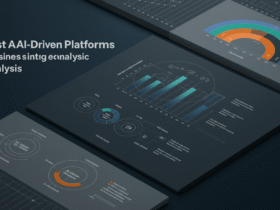










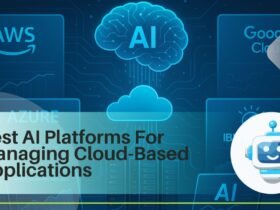



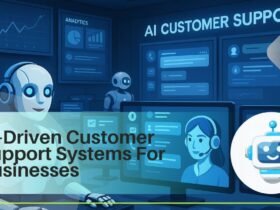

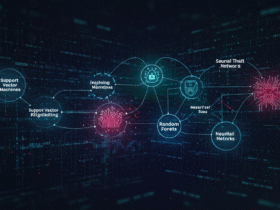






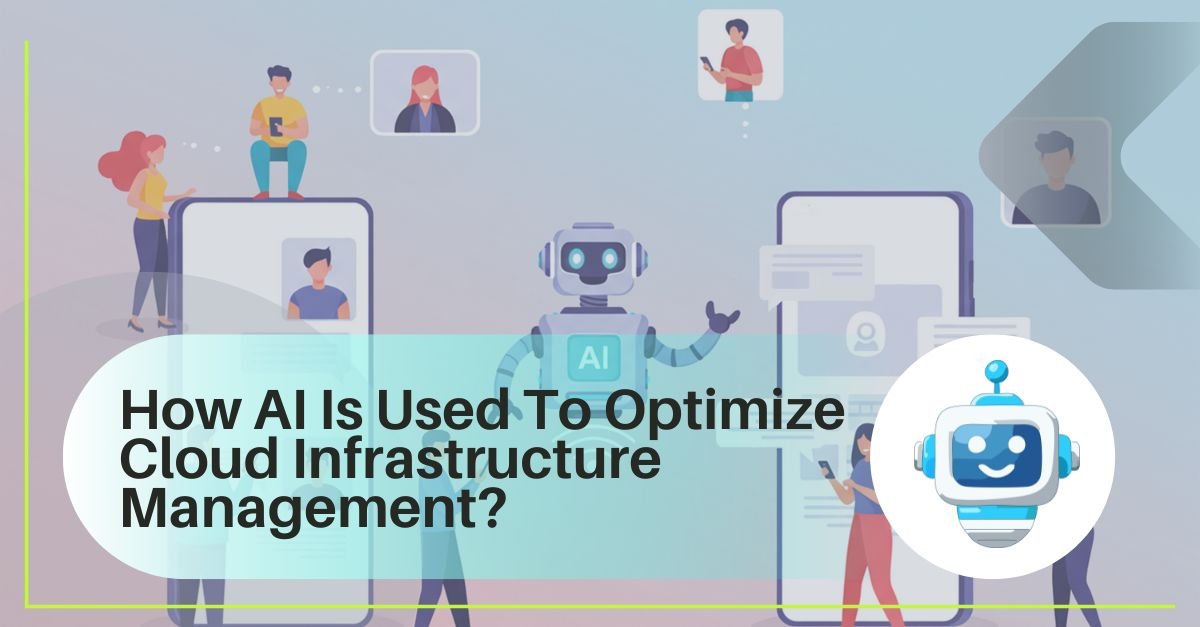

Leave a Reply